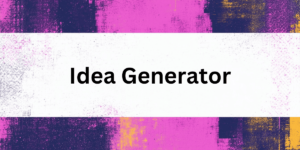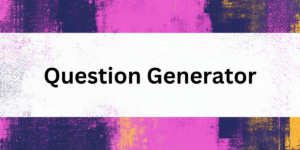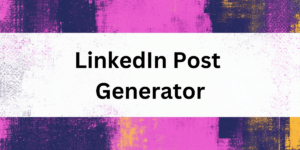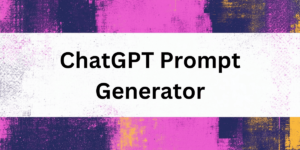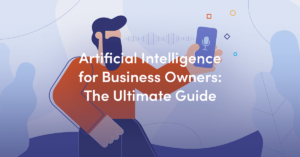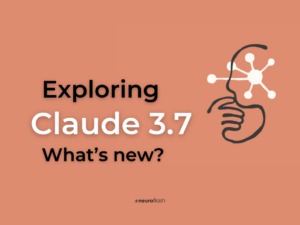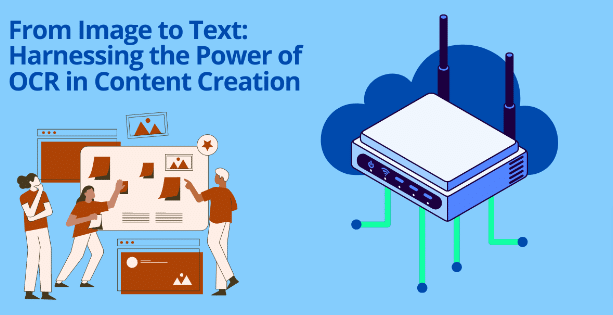
Optical Character Recognition is an innovative technology. It detects, interprets, and extracts text characters from an uneditable file. This uneditable file commonly means images of some sort but can also include files like PDFs.
The invaluable information enclosed inside an image can be made modifiable with this technology’s help. As a result, this modifiable data can be used as content. In other words, OCR allows users to utilize image-based information as text-based content.
But that is not all. This is not the only way OCR can be useful for content creation. There are tons of other applications of this technology as well. This article will familiarize you with those applications and everything you need to know about them.
Understanding Image-to-Text Conversion
Before stepping into the list of advantages of OCR technology, we must first understand the process. How is this technology able to convert images into text? Here is a shortened explanation of this process for your understanding to some extent.
- When the image is inserted into any OCR-based technology, like an online tool, it is first processed. During this, mostly the images are scanned and converted into a black-and-white format.
- This allows the tool to interpret characters more easily. The characters in the image are matched with text characters from the tool’s database. The closest matching alphabet, number, sign, etc., is replaced with it.
- Then, a result is generated in the form of text. This text can be altered and used as you like.

In this way, the process of converting an image to text form is completed.
OCR Tools and Technologies
Because of the abundance of OCR tools and technologies on the internet, we thought it would be best to introduce you to some of the dependable ones among them. This will save you from needing to search for these tools on your own.
In our opinion, the following OCR tools are the best in terms of precisely converting images to text:
These tools all have unique strengths that can help users of all kinds.
Applications of OCR in Content Creation
Now, we will discuss the main point of our discussion which OCR’s use in content creation. There are many ways in which OCR can be used for this purpose. Some of them are discussed in the sections given below.
1. Digitizing Hand Written Notes
Modern image-to-text converters make use of cutting-edge OCR algorithms to understand even hand-written characters. So, for example, if you have a bunch of class notes and you want to convert them into digital content, OCR can help you.
This helps you save time that would otherwise be used to transcribe notes manually.
With OCR-based notes to digital document conversion, you also don’t have to worry about transcription mistakes. For example, in manual conversion, you might type an incorrect value. This won’t happen in OCR conversion.
2. Converting Printed Books to Text
It was found that 191 million e-Books were sold in the United States in 2020. This shows the popularity of these electronic books. However, there are still printed books out there that don’t have a digital copy. These books can be converted into digitized documents with OCR.
All you have to do is take understandable images of the book pages and insert them into a text extraction tool.
The result will be in the form of a full-fledged e-book with the same wording and even formatting. This way, you won’t have to write such books on your own. Instead, such content can be created in an automated manner.
3. Multilingual Content Extraction
You might already know that content on the internet is available in a bunch of different languages. That’s why many text extraction tools also have other language support. Because of this feature, you can extract multilingual content from images. This content from different languages can then be used as textual information. So, you don’t have to worry if you deal with languages other than English because OCR tools have you covered.
Advantages and Limitations of OCR Technology
Like almost every other innovation, OCR also has its downsides. But after a detailed audit of this technology, we found out that accurate usage of OCR makes the downsides easily ignorable. Here are some of its notable benefits and limitations for a better overview.
Advantages
These are given in the following list:
- OCR technologies save you time and help you fulfill tasks with a lot less effort.
- The retrieval of text from images is much more accurate when it is done with the help of OCR. All characters are extracted extremely accurately.
- Even if there are one or two errors for some reason, you have the option to edit them. In this way, you get 100% precise image-to-text conversion.
These are the most prominent advantages of OCR.
Limitations
Now, let’s introduce some potential limitations of the technology.
- If your image has complex graphics or animated elements, OCR might not be able to scan it properly.
- This is not true for all OCR tools, but some of them become less accurate with the decrease in image quality.
- Uncommon fonts might not be interpreted accurately by OCR tools.
These limitations can be tackled by using simple and clear images instead of complex ones. But this shows that you might not be able to depend on these tools when complicated images are in question.
Tips for Effective Image to Text Conversion
Even though OCR technology has made the process of extracting text from images quite simple, there are still some tips that can help you. In the following, we have shared some of the best techniques to keep in mind when converting images into text:
- Understand your needs and choose a tool accordingly.
- Choose images in which text is easily readable so the tool is able to detect it conveniently.
- Scan the image if the text characters are difficult to detect.
- Proofread the results generated by the tool to make sure there aren’t any errors.
If you follow these tips, achieving highly accurate results will become easy. In this way, whatever content you create using OCR will be flawless.
Future Trends and Innovations in OCR
OCR is already a well-established technology, but it is constantly evolving. In a short time, OCR might be able to do much more than it can do right now. Here are some expected updates in OCR technology;
- Integration of machine learning into OCR tools.
- Enhanced accuracy and enlarged database of detectable text characters.
- Increased integration of OCR tools with other software.
These simple yet effective advancements can make the text extraction process even more efficient than it is now.
Conlcusion
In the end, we would like to say that OCR is a beneficial technology for content creation and more. Even though it can’t create content directly, it can help you utilize uneditable information inside images. This information can be effectively used as text content and shared effectively.



